Back to blog
8 MIN READ
Why you should be maximizing for CLTV rather than CAC in today’s market
PUBLISHED
22 August, 2022

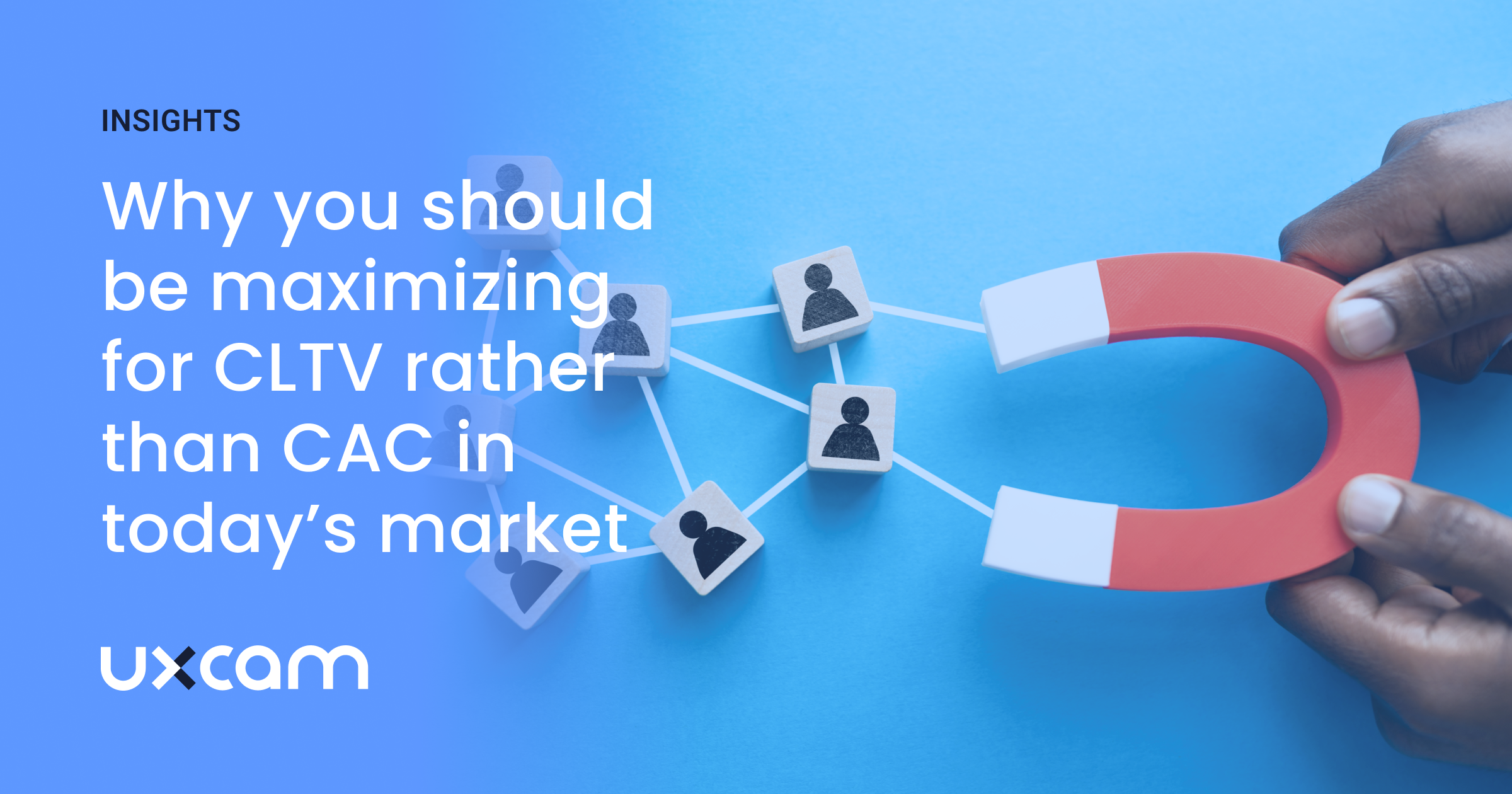
Have you ever wondered why big billion-dollar tech organizations like Facebook would acquire other big techs like Instagram and Whatsapp?
The Big Tech Landscape is laced with deals like these. One could argue that big wigs like FAANG could build their own products easily, at least for the acquisitions in the mobile app product space. They have the talent, the attention, and the scalable platform to reach the customers.
What are they paying for? The answer is you (the users). They are acquiring your time and your social network on these platforms. And the promise that you would continue to spend time here within your network (future cash flows). When VCs and investors make investments in another tech company, it’s based on potential growth (Market Valuation).
This is especially true for mobile app spaces that operate on social networks. This social network becomes exponentially (being the operating word) more valuable as it continues to grow, and it becomes extremely difficult to create a new one. That’s why it made sense when Microsoft bought LinkedIn for $26 Billion. On the other hand, the history of the mobile app space is laced with various expensive adventures that the Big Tech organizations undertook and failed. Facebook tried building Watch, a competitor to Netflix. Google built and launched Google+ and it failed. The phenomenon to go mobile permeated the digital/physical product space as well when Microsoft Zune was launched as a digital music player. Hence, it is more effective to acquire an established social network than to try to replace it.
Understanding CLTV and CAC
Let’s talk about future cash flows. In the world of mobile app development, there are various metrics that are tracked or benchmarked against e.g. Monthly Active Users, Valuation, Scalability, Acquisition, and Retention costs. Here is a comprehensive list of mobile app metrics.
However, they all whittle down to the two metrics: CLTV and CAC. These two key indicators either include or influence most other metrics that we mentioned above. Such is the significance of these two indicators.
Customer Lifetime Value (CLTV)
It is the sum of marginal profits earned from each item sold to an average customer until they quit using your product. Note: it is marginal profit, not revenue. CLTV could be calculated as the sum of marginal profits per customer x average customer lifetime
But how do you leverage this indicator to predict average revenue from a new customer?
You can obtain a sum of marginal profits per customer in a unit of time (month, quarter, or year) But, it is difficult to predict a customer’s lifetime.
We can leverage metrics like ‘Churn Rate’ to predict the percent of users who quit using your product in a month, quarter, or year. Thus, giving us the Average Customer Lifetime (=1/churn rate). Say your average churn rate is 40% in a year, and the Average Customer Lifetime = 1/0.4, which is 2.5 years.
To give you a perspective, the average revenue per user varies from $752 per user on Amazon to $112 per user on Facebook. And, if you have been Googling for the last 20 years, you have made Google on average $349 and some change each year for the last 20 years.
Therefore, it makes sense as a company to be focused on maximizing customer lifetime value. Hence, this shifts the conversation to the costs — acquiring the customers and retaining them, that is, the subtle art of Product Management.
You might also be interested in How to measure, analyze, and reduce app churn.
Customer Acquisition Cost (CAC)
It is the average amount of dollars spent bringing a unique customer to your product.
Note that the acquisition costs could be sneaky and difficult to quantify. To account for acquisition costs, we can consider: sales & marketing costs i.e., salaries of customer success managers and cost of running campaigns, salaries of product managers and developers, QA and others working on launch and integration, cost of servers hosting your data. If you are running your product on a freemium model (ala Spotify), it is also the opportunity cost of running a free tier of your product.
Therefore, it becomes increasingly difficult to know where to draw the line.
Hence, the rule of thumb is CAC should not be captured at a point in time but over time that counts for the average number of users.
The ‘Network Effects’ mentioned above, mean that you are invested in the business for the long-term continued flow of profits (CLTV) with continued expenses (CAC). It’s a delicate balance.
The other part of the equation is retention costs to keep the customers with you. It is the cost of product management where you are continuously tailoring the product to appeal to your users and keep it relevant for the future.
It could also include running the new campaigns to keep your customer aware of the new features, the cost of customer support, and the cost to run servers. If we add retention costs, the conversation becomes more balanced with the true and total cost of holding the customer’s attention.
Hence, for all these reasons, the CAC is marginally over-hyped considering the overall costs (acquisition, long-term product management, and of course, the customer lifetime value). It is difficult to quantify the long-term cost of product management. It could mean the salaries of product managers and developers, and the cost of making product mistakes and learning from them.
One could argue that CLTV should be more than CAC to break even. Yes, of course. But it should be significantly more considering the sneaky nature of acquisition costs. However, the word on (Wall) street and (Silicon) Valley is that the CLTV should be at least three times greater than the CAC. I guess it ensures that the tail does not wag the dog.
CLTV v/s CAC in the current times: What should you focus on?
It becomes pertinent to view the above through the lens of the times we live in. During the pandemic stage, the government provided stimulus to citizens and circulated a lot of money in the market, and reduced interest rates.
Thus, user consumption went through the roof. During the pandemic, big tech firms benefited hugely from consumers staying home and spending hours online instead of going out. Thus, the customer lifetime value broke the charts with a below-normal cost of acquisition as you didn’t need to convince somebody to watch more Netflix or scroll more on Instagram.
Now, during the post-pandemic stage, we are going through unprecedented times, considering global supply shortages and geo-political conflicts. Now, the governments are curbing consumer spending by raising interest rates which curb the spending but also halt economic growth. The economy has been led to the point of hyperinflation and a high shortage of goods. Thus, leading us to Stagflation (a period of stagnant growth with high inflation). In the context of product management, the churn rates for non-essential digital products would dramatically increase (see Netflix). In terms of product development, it would require ruthless prioritization of the product roadmap. It becomes more and more pertinent to maximize customer lifetime value. Thereby customizing your roadmap to attune to the needs of your customers and launching relevant features.
During these times, it calls for a re-evaluation of the GTM approach. We need to re-assess the market we are targeting and the segmentation. The problem we are solving for customers - Is it essential, and for which customer or user segment? It also requires prudence in CAC. If your product does the job, the word of mouth would sway a potential customer, but over-splurging on social media spending may not.
Maximizing Customer Lifetime Value (CLTV)
One of the more important metrics a business should keep track of to make smarter decisions is CLTV. The more businesses pay attention to their customers' lifetime value, the more growth they will experience. To maximize your CLTV, you will need to implement the following techniques.
1. Create personalized customer experiences
80% of consumers are more likely to purchase from a brand that provides personalized experiences. Nowadays, it’s all about personalization and targeting. Segmenting customers and providing unique experiences based on demographics and user behavior makes your outreach more specific, and therefore more effective.
UXCam offers endless possibilities to create custom segments and send highly personalized push notifications to your app users based on app usage, behavior, and user experience.
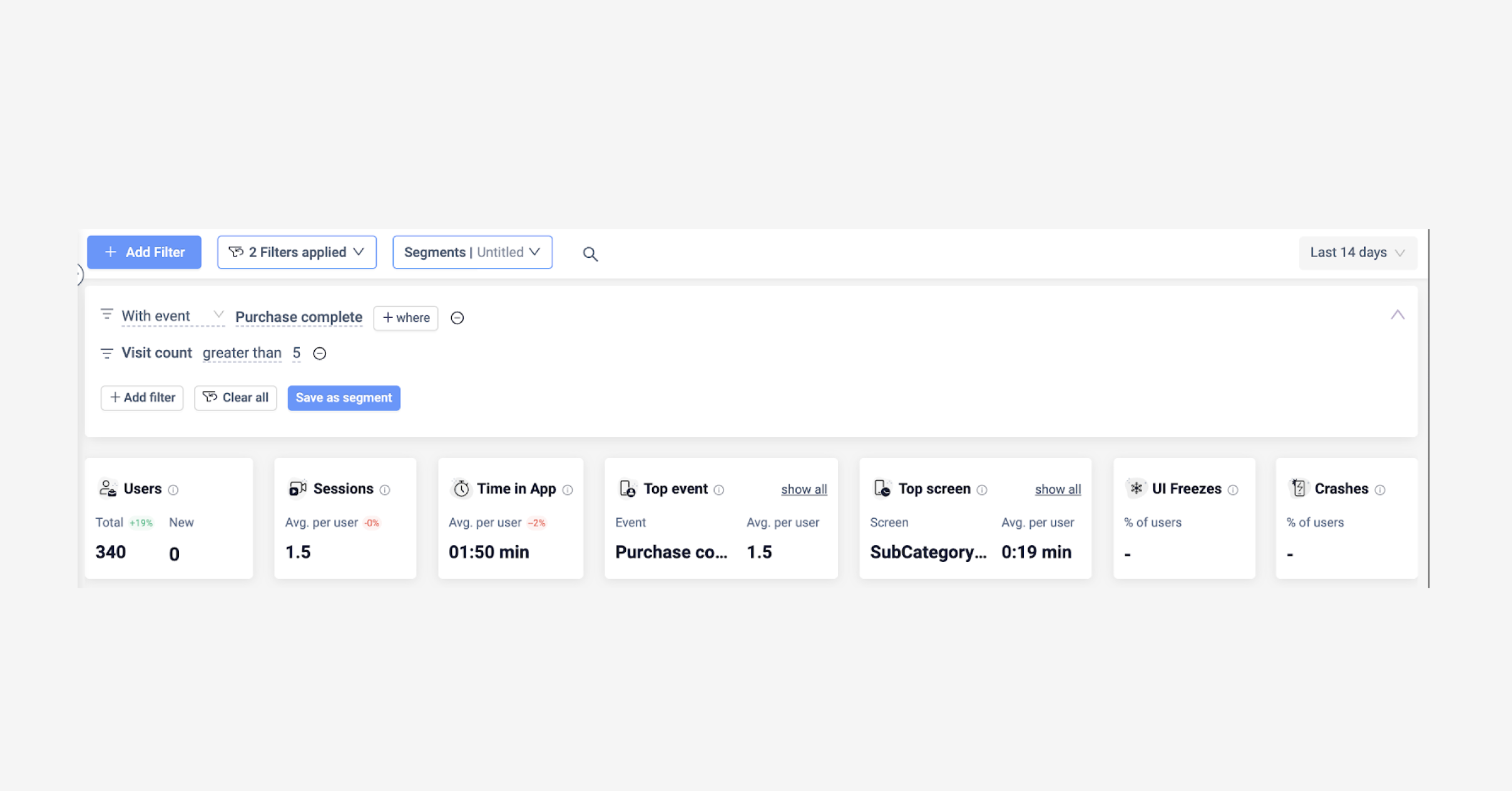

Creating an “engaged” user segment in UXCam: For example, users that completed a purchase in the last two weeks and visited the app more than five times.
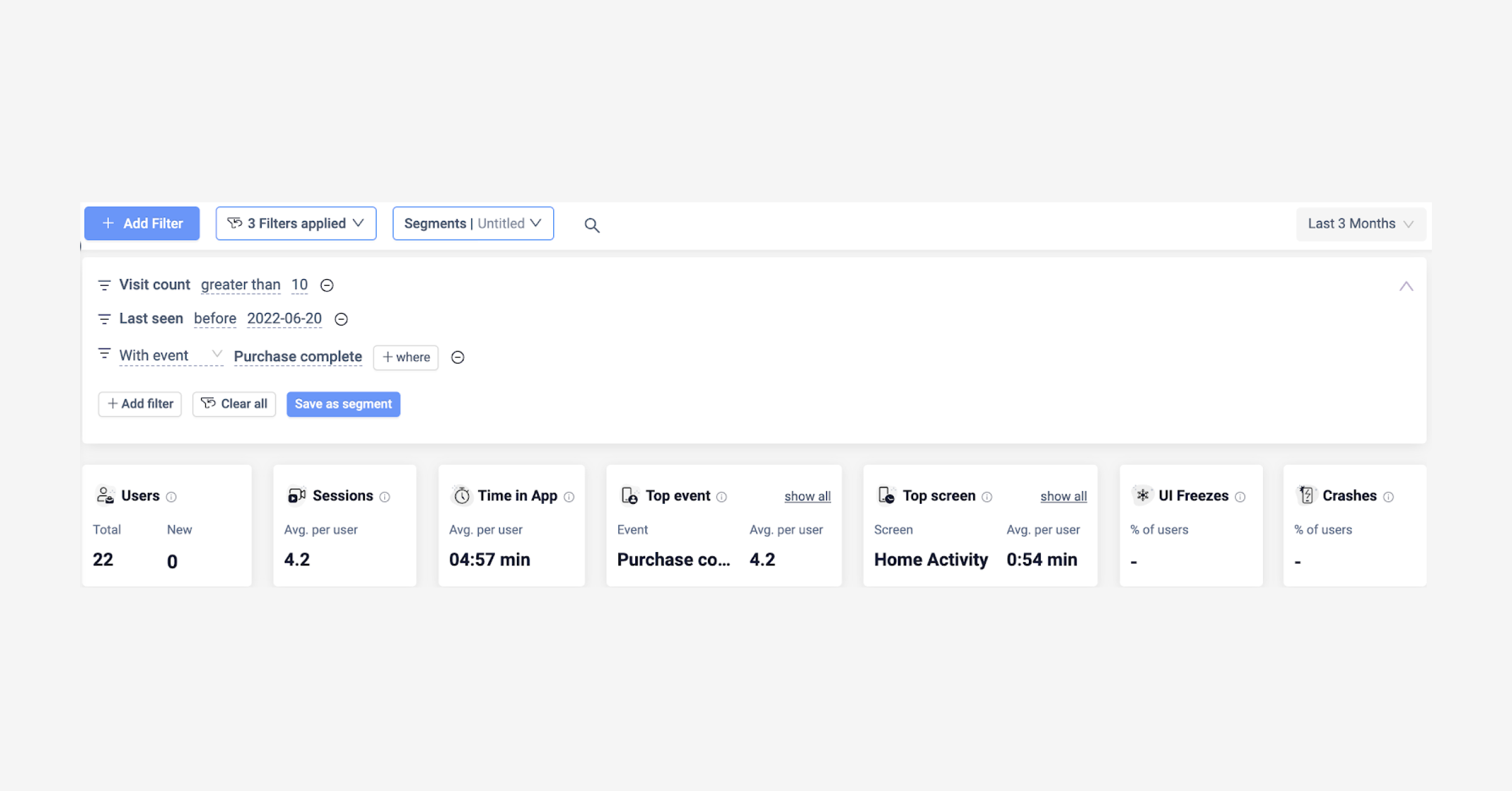

Creating a “recently inactive” user segment in UXCam: For example, users that completed a purchase, visited the app more than ten times but haven’t come back in the last two weeks.
Here are a few ways to send push notifications in your app to enhance your customer lifetime value:
Boost engagement or reward active users by sending personalized offers or discounts.
Enhance your support by sending personalized notifications to users that reported or experienced issues or bugs.
Connect with beta testers directly based on their interaction and behavior.
Improve retention by targeting recently inactive users to re-engage them.
Offer guidance to users exactly when they need it.
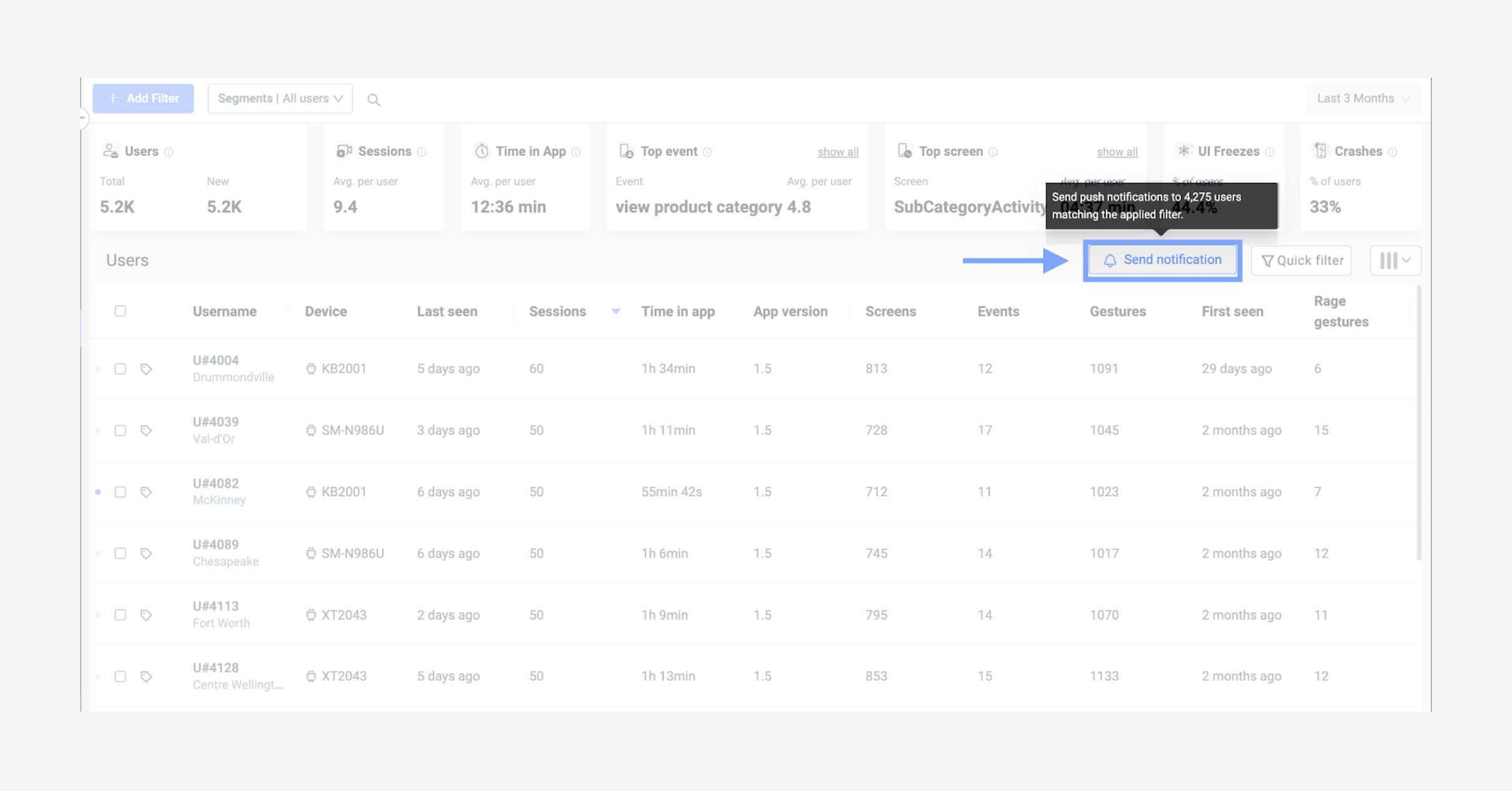

2. Collect actionable user feedback
Leveraging feedback from your customers helps you create a satisfying app experience that's tailored to your user's needs, which ultimately boosts key success metrics like app retention and CLTV.
Directly asking your customers how satisfied they are with your product will always be a powerful tool for understanding customer satisfaction and sentiments. Most product managers do this using Net Promoter Score (NPS) surveys or other surveys such as CSAT and CES.
If you collect NPS in your app, you can send it as a user property to UXCam. The score will be updated, so you always have the latest score for each user. Then you can use it to create segments and analyze behavioral patterns based on the satisfaction level or break down your funnels or events based on the scores.
This allows you to follow up with users to find out what exactly they love or hate about your app and what improvements they’d like to see.
A high NPS score increases your CLTV since happy customers are far more likely to stay with your business than unhappy ones.
3. Encourage loyalty
Customers love loyalty programs. According to the Loyalty Report 2022, 78% of consumers attest loyalty programs make them more likely to do business with brands.
Rewarding your customers for their loyalty is one of the best ways to get them to keep coming back to your app. It’s important to make sure your discount or reward scheme is easy to understand, allows your customers to build up points quickly, and provides rewards that are relevant and desired.
A good example is the Starbuck Rewards program that allows customers to accumulate points when they pay or order through the Starbucks app. Not only do Starbucks Rewards members gain points that can be used to redeem free drinks or food, but they can also use the app to place orders and even stream music.
From go-to orders to seasonal picks, Starbucks acquires valuable insight into user behavior through its mobile app analytics, allowing them to offer more relevant rewards to customers.
With loyalty programs, you’ll gain a better understanding of who your most loyal customers are while increasing CLTV.
You might also be interested in Getting to the why: How mobile companies are shaping the world
4. Identify and eliminate points of friction within your app
Understanding how users interact in your mobile app is a fundamental part of analyzing user behavior to improve retention and reduce app churn.
Qualitative analytics is a practical way to find answers to why users behave in a particular way. Specifically, solutions like touch heatmaps and user session recordings allow you to identify points of frustration in the user journey.
With qualitative data, your product teams can justify design decisions to improve the in-app user experience, which in turn increases customer lifetime value when users are happy with the product.
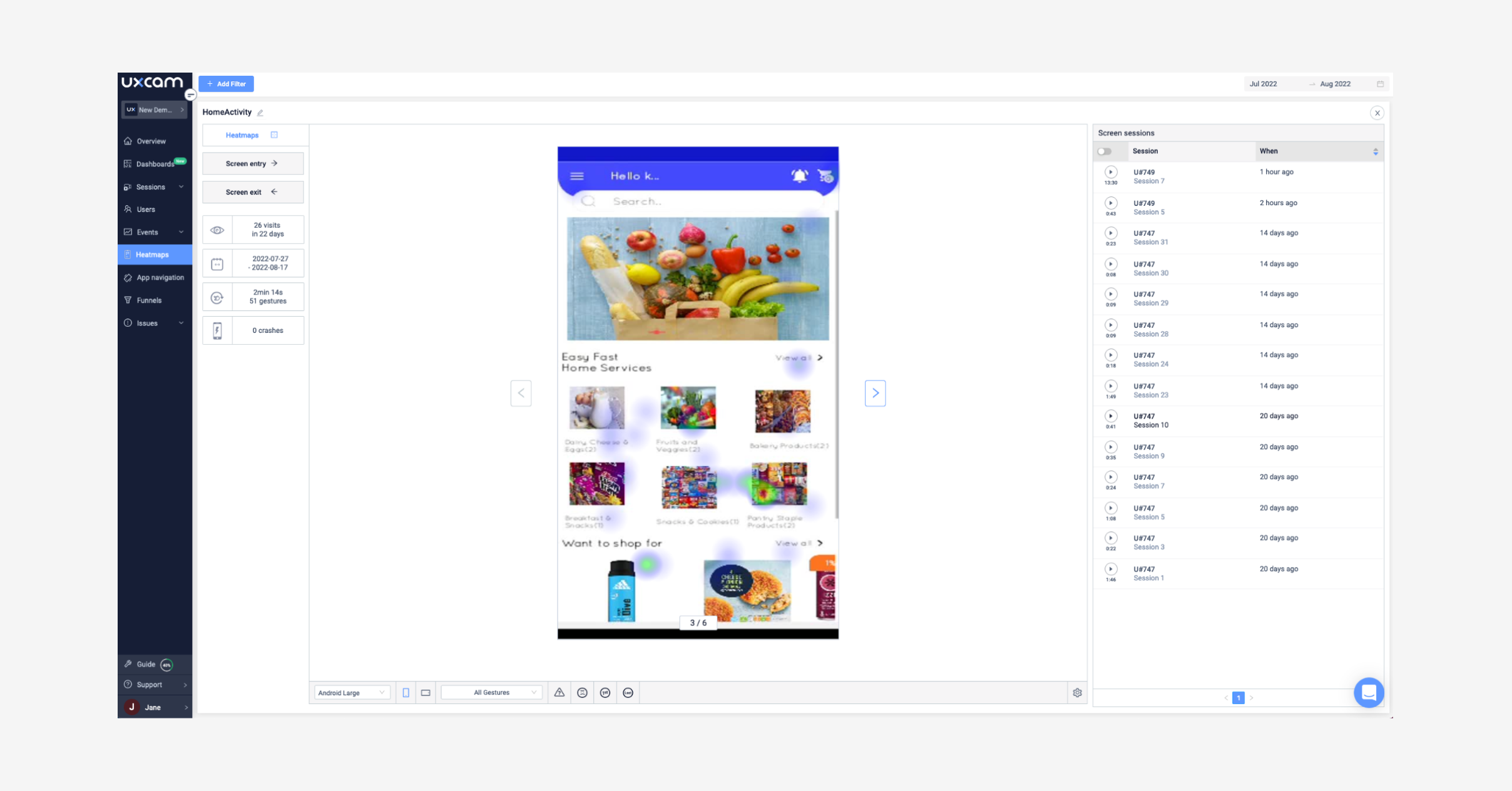

You might also be interested in:
AUTHOR

Vishal Balani
Seasoned Product Manager working at the intersection of business growth, technical knowledge and design principles with 12+ years of experience of working in Tech Industry enabling ‘Digital Transformation and Organization Change’.
What’s UXCam?
Related articles
App Analytics
Mobile App Tracking: Practical Guide & Best Tools [2026]
The best tracking tools for mobile...

Jonas Kurzweg
Product Analytics Expert
App Analytics
Top Analytics SDKs 2026
Pick the right analytics SDKs to improve your app's...

Jonas Kurzweg
Product Analytics Expert
Product best practices
8 Best UX Analytics Tools and Software We’ve Tested 2025
A good UX design is key when it comes to user satisfaction. Learn about five of the best UX analytics tools you can use to get valuable insights about user...

Jonas Kurzweg
Product Analytics Expert


